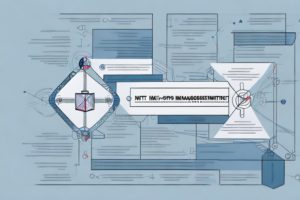What are the 3 main types of risk?

Three overlapping circles
Risk is an inherent part of business and has been around for as long as businesses have. It is defined as the potential for loss or damage, and it can come from various sources, including internal factors like poor management or external factors such as natural disasters. Understanding the concept of risk is essential for any business leader as it enables them to identify, measure, and manage risks effectively. In this article, we will delve deeper into the different types of risk, their importance, and how best to manage them.
Understanding the concept of risk
The concept of risk involves the possibility that something unfavorable may happen, leading to damage, loss, or negative outcomes. All businesses are exposed to various risks that can disrupt their daily operations, impede growth, or even lead to complete loss of the business. Effective risk management is the key to mitigating potential risks and ensuring continued business success.
There are different types of risks that businesses face, including financial risks, operational risks, strategic risks, and reputational risks. Financial risks involve the possibility of financial loss due to factors such as market fluctuations, credit defaults, or currency exchange rate changes. Operational risks arise from internal processes, systems, or human errors that can lead to business disruptions or loss of productivity. Strategic risks are associated with the business’s long-term goals and objectives, such as entering new markets or launching new products. Reputational risks involve damage to the business’s reputation due to negative publicity, customer complaints, or unethical behavior.
Effective risk management involves identifying potential risks, assessing their likelihood and impact, and implementing strategies to mitigate or avoid them. This can include measures such as diversifying investments, implementing internal controls, developing contingency plans, and maintaining strong relationships with stakeholders. By effectively managing risks, businesses can protect their assets, maintain their reputation, and ensure long-term success.
Why is it important to identify different types of risks?
Identifying the different types of risks is critical because different risks require different management strategies. Without proper identification, businesses may not prioritize the potential risks that could affect them the most. In addition, identifying and assessing risks help businesses to be better prepared to handle emergencies, ensuring business continuity and minimizing losses.
Moreover, identifying different types of risks can also help businesses to make informed decisions about investments and resource allocation. By understanding the potential risks associated with a particular project or initiative, businesses can weigh the potential benefits against the potential costs and make more informed decisions. This can help to minimize the likelihood of costly mistakes and ensure that resources are allocated in the most effective way possible.
The difference between financial, operational, and strategic risks
There are three main types of risk that businesses face – financial, operational, and strategic risks. Understanding the distinctions between the three is crucial for businesses to develop effective risk management strategies.
Financial risks refer to the potential losses that a business may incur due to changes in the financial market, such as interest rates, exchange rates, or stock prices. Operational risks, on the other hand, are related to the day-to-day operations of a business, such as equipment failure, supply chain disruptions, or employee errors. Finally, strategic risks are those that arise from external factors, such as changes in consumer behavior, new competitors entering the market, or shifts in government regulations.
By identifying and assessing these different types of risks, businesses can develop strategies to mitigate their impact and protect their bottom line. This may involve implementing financial hedging strategies, improving operational processes, or developing contingency plans for potential strategic threats.
Examples of financial risks
Financial risks arise from factors that can negatively impact the company’s financial performance, including credit or counterparty risks, exchange rate fluctuations, and market volatility. For example, a sudden drop in the stock market could lead to financial losses, making financial risk management essential for businesses.
Another example of financial risk is interest rate risk. This occurs when there is a change in interest rates that affects the value of a company’s assets or liabilities. For instance, if a company has a large amount of debt with variable interest rates, a sudden increase in interest rates could lead to higher interest payments and lower profits. Therefore, companies need to monitor and manage their exposure to interest rate risk to avoid potential financial losses.
Examples of operational risks
Operational risks are related to the internal processes and systems of the business and may arise from a lack of internal controls, system failures, or human errors. Examples of operational risks include cyber attacks, fraud, or supply chain disruptions.
Another example of operational risk is the failure to comply with regulatory requirements. This can result in fines, legal action, and damage to the company’s reputation. Additionally, operational risks can also arise from natural disasters, such as floods or earthquakes, which can disrupt operations and cause significant financial losses.
Examples of strategic risks
Strategic risks arise from external factors such as changes in consumer behavior, disruption from competitors, or regulatory changes. These risks can directly affect the company’s long-term objectives and business strategy. For example, new regulations in a particular industry could significantly affect the business model of a company in that industry.
Another example of a strategic risk is the emergence of new technologies that disrupt the market. For instance, the rise of e-commerce has significantly impacted traditional brick-and-mortar retail businesses. Companies that failed to adapt to this change faced the risk of losing their market share and eventually going out of business.
Additionally, geopolitical risks such as political instability, trade wars, and economic sanctions can also pose strategic risks to companies. For example, a company that heavily relies on imports from a country that is facing economic sanctions may face supply chain disruptions, which could affect its ability to deliver products to customers and ultimately impact its revenue and profitability.
How to manage financial risks effectively
Managing financial risks involves identifying, measuring, and mitigating unfavorable financial outcomes. Companies need to develop strategies to reduce exposure to financial risks, including diversification of investment portfolios, hedging, or increasing liquidity.
One of the most important steps in managing financial risks is to conduct a thorough risk assessment. This involves identifying potential risks and their potential impact on the company’s financial health. By understanding the risks, companies can develop effective strategies to mitigate them and protect their financial stability.
Another key aspect of managing financial risks is to stay up-to-date with market trends and changes. This includes monitoring economic indicators, such as interest rates and inflation, as well as keeping an eye on industry-specific developments. By staying informed, companies can make informed decisions and adjust their strategies as needed to minimize financial risks.
Best practices for identifying and mitigating operational risks
The first step in mitigating operational risks is identifying potential risks and implementing internal controls to reduce the likelihood of the adverse event. Establishing data security protocols, increasing employee training, and investing in disaster recovery preparedness are just some ways businesses can mitigate operational risks effectively.
Another important aspect of mitigating operational risks is regularly reviewing and updating risk management strategies. As businesses evolve and grow, new risks may emerge, and existing risks may become more significant. Conducting regular risk assessments and updating risk management plans can help businesses stay ahead of potential threats and minimize the impact of adverse events.
Strategies for managing strategic risks in your business
Managing strategic risks requires a thorough understanding of the external forces that pose a threat to your business’s long-term objectives. Businesses can implement strategies such as diversifying operations, regularly monitoring external changes, or identifying potential partnerships, to manage strategic risks.
One effective strategy for managing strategic risks is to conduct regular risk assessments. This involves identifying potential risks, evaluating their likelihood and impact, and developing plans to mitigate or avoid them. By regularly assessing risks, businesses can stay ahead of potential threats and take proactive measures to protect their long-term objectives.
Another important strategy for managing strategic risks is to maintain open communication with stakeholders. This includes customers, suppliers, employees, and investors. By keeping stakeholders informed about potential risks and the steps being taken to manage them, businesses can build trust and confidence, and minimize the impact of any negative events that may occur.
The role of risk management in business success
The ultimate goal of risk management is not only to reduce the likelihood of risks occurring, but also to help businesses identify opportunities. Effective risk management enables businesses to make informed decisions, pursue new opportunities, and be better prepared for sudden emergencies – all of which help businesses thrive in a competitive marketplace.
Furthermore, risk management also helps businesses to build trust and credibility with their stakeholders. By implementing effective risk management strategies, businesses can demonstrate their commitment to responsible and ethical practices, which can enhance their reputation and attract new customers and investors. In addition, risk management can also help businesses comply with legal and regulatory requirements, which can prevent costly fines and legal disputes.
Common misconceptions about risk management
One of the common misconceptions about risk management is that it is only necessary for larger businesses. In reality, all businesses, regardless of size, are exposed to various risks and should prioritize risk management to ensure success. Additionally, another misconception is that risk management is a one-time exercise. However, effective risk management is a continuous process, requiring businesses to regularly assess and monitor potential risks.
Another common misconception about risk management is that it is solely the responsibility of the management team. In fact, risk management should involve all employees at every level of the organization. Each employee has a unique perspective and can identify potential risks that may not be apparent to others. By involving all employees in the risk management process, businesses can create a culture of risk awareness and proactivity, which can ultimately lead to better risk management outcomes.
The importance of ongoing risk assessment and monitoring
The business environment is constantly changing, and new risks emerge all the time. Therefore, maintaining an ongoing risk assessment process is critical to stay on top of any potential threats. Monitoring changes in the business environment, including market trends, regulatory changes, or emerging technologies, can help businesses more effectively manage risks.
One of the key benefits of ongoing risk assessment and monitoring is that it allows businesses to be proactive rather than reactive. By identifying potential risks early on, businesses can take steps to mitigate them before they become major issues. This can help to prevent financial losses, reputational damage, and other negative consequences.
Another important aspect of ongoing risk assessment and monitoring is the need for regular updates and reviews. Risks can change quickly, and what may have been a low-level threat yesterday could become a major issue tomorrow. By regularly reviewing and updating risk assessments, businesses can ensure that they are always aware of the latest risks and are taking appropriate action to manage them.
Key indicators that signal potential risks
Understanding the root causes of various risks is key to identifying key indicators that can signal potential risks. For instance, a sudden dip in sales could indicate a supply chain problem, a decrease in employee productivity could signal morale issues, and weak cash flow can indicate financial problems.
How to respond effectively to unexpected or emerging risks
When managing risks, it is also important to have contingency plans in place in case something unexpected occurs. This may include developing emergency response protocols or implementing crisis management teams.
Case studies on businesses that have managed different types of risks successfully
Finally, analyzing case studies of businesses that have managed various types of risks successfully is another valuable tool in effective risk management. It can provide insights into effective risk management techniques and strategies and guide businesses in designing their risk management plans.
In conclusion, businesses face various risks, including financial, operational, and strategic risks, and effective risk management is crucial for business success. Identifying and assessing potential risks, implementing mitigation strategies, and continuously monitoring potential threats can help businesses to reduce losses and capitalize on opportunities.



